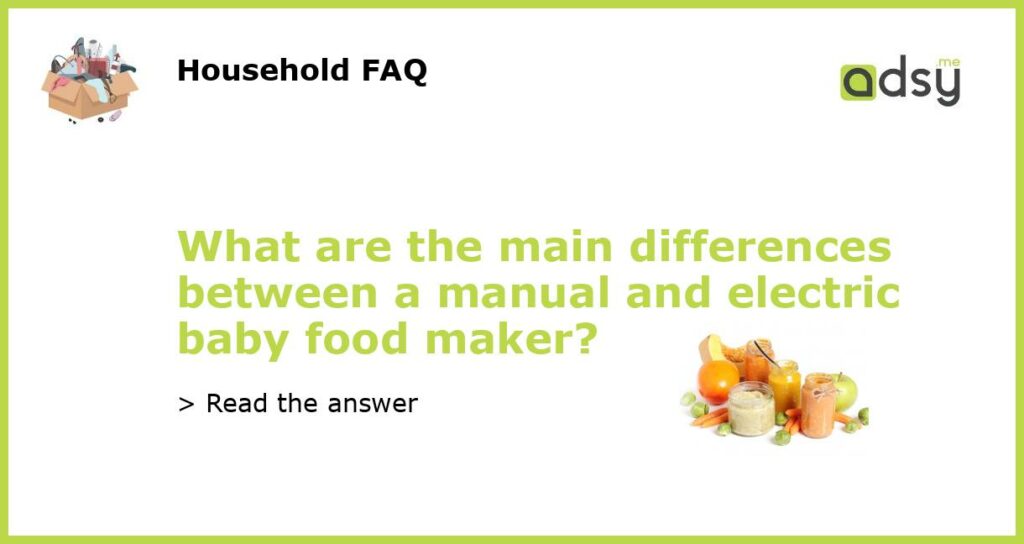Manual vs Electric Baby Food Maker: A Complete Comparison
One of the most important stages in a baby’s development is introducing them to solid food. As parents, it’s essential to choose the right equipment, and baby food maker is an excellent investment for this purpose. There are various types of baby food makers available in the market, but manual and electric options are two of the most popular choices. Here, we will take a closer look at the main differences between a manual and electric baby food maker so that you can make an informed decision.
Convenience
The primary difference between the two types of baby food makers is their convenience. A manual baby food maker requires ample arm strength and elbow grease to grind the food. The process of manual grinding is pretty much hands-on, so you will have to stay close to the machine in case it requires further adjustments. On the other hand, electric baby food makers are easy to use and require minimal manual input. You can set up the machine to blend or chop, and it will take care of everything.
Cost-Effectiveness
Another significant difference between the two is the cost. Manual baby food makers are generally less expensive compared to electric baby food makers. It’s because they have fewer parts and are relatively simple in design. However, electric baby food makers come with a higher price tag, but they offer convenience and ease-of-use. You have to decide how much you’re willing to spend and determine which features are essential for you and your baby’s needs.
Speed
When it comes to making baby food, time is of the essence, and electric baby food makers are the clear winners in speed. With an electric machine, you can puree or chop food in a matter of seconds. Whereas, manual machines take longer to grind, and you’ll have to do it in small batches, which can become time-consuming.
Portability and Storage
Manual baby food makers are usually more compact and easier to carry around, making them ideal for travel or outdoor trips. They do not require electricity, and you can operate them without any hassle whatsoever. However, they do take up more storage space than electric baby food makers. Electric baby food makers need a power outlet and require more storage space than manual machines, but they offer features such as steaming, blending, and defrosting in one appliance, making them more versatile.
Cleanliness and Maintenance
Electric baby food makers are easy to clean and maintain as they usually come with detachable parts that can be rinsed and washed quickly. But manual baby food makers require more hands-on cleaning, and you need to pay extra attention to detail to ensure that there is no leftover food in small crevices or crannies. However, manual machines are incredibly durable and usually have fewer parts, reducing the risk of damage.
At the end of the day, the decision between a manual and electric baby food maker comes down to your child’s needs and your budget. If you’re tight on budget and have a little extra time, opting for a manual machine might work for you. But if you prefer convenience, speed, and versatility, an electric baby food maker is the way to go.






